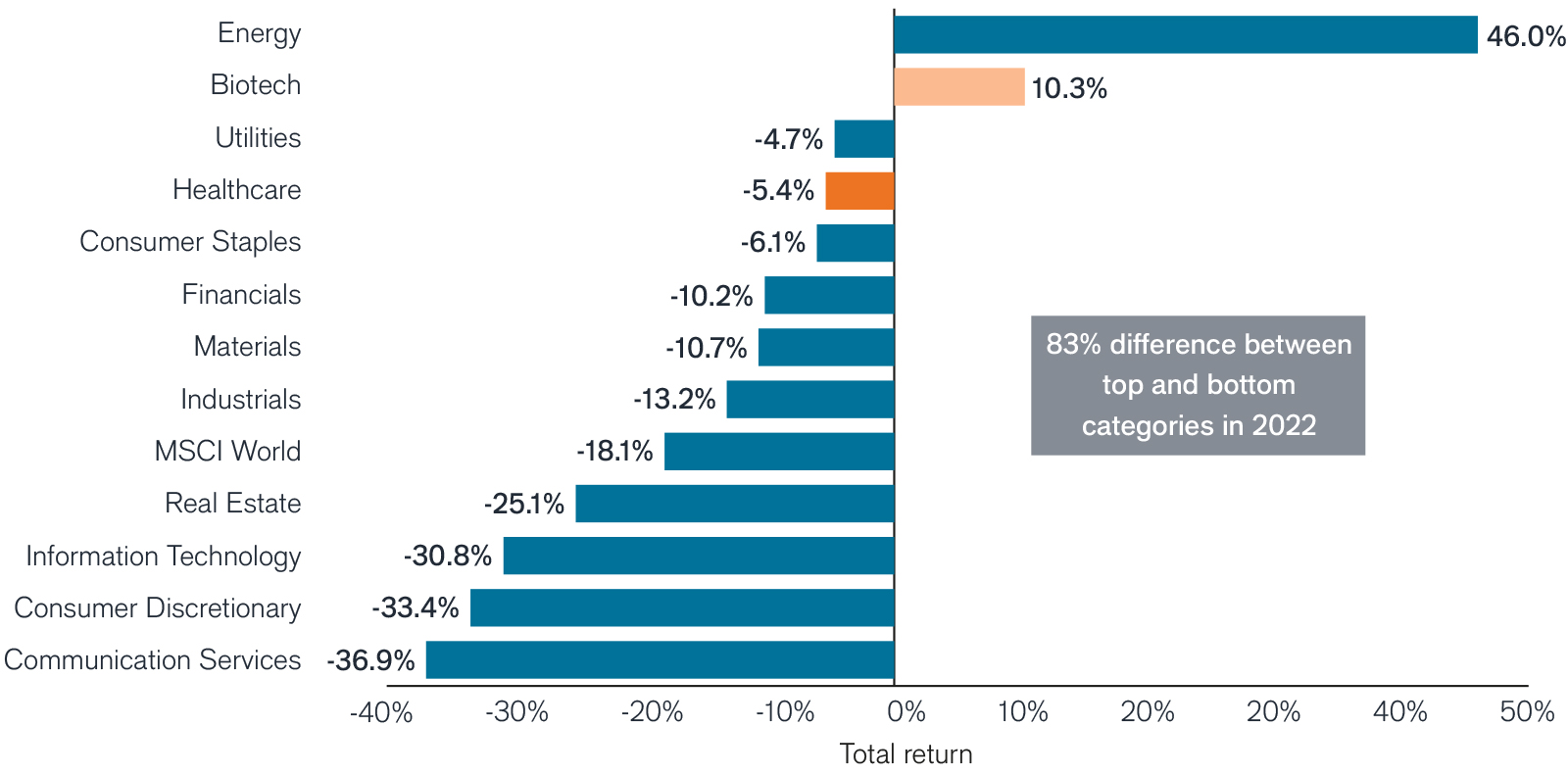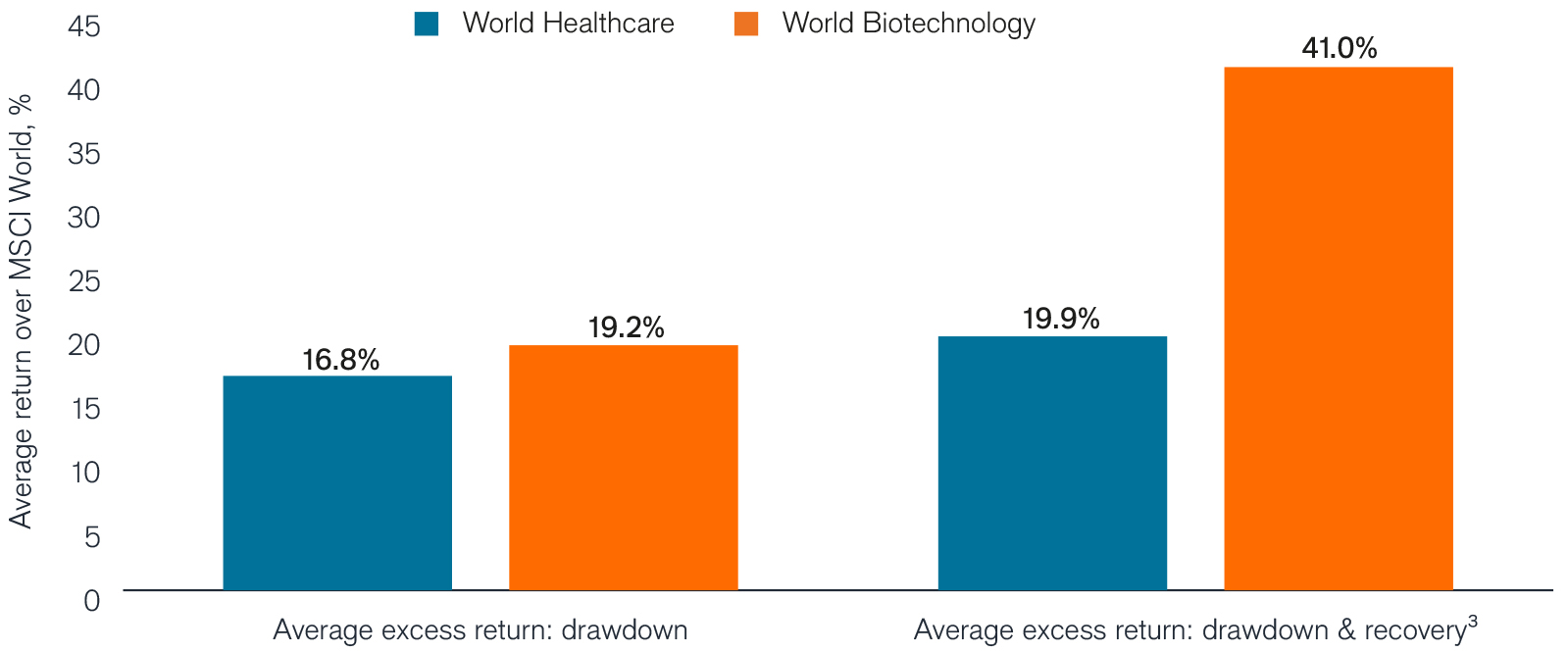Subscribe
Sign up for timely perspectives delivered to your inbox.
The healthcare sector has proved resilient during past market downturns and may offer growth opportunities regardless of the recession outlook. The Portfolio Construction and Strategy Team explains why an active approach and sector expertise are critical to identifying companies that can utilize the speed of innovation in the sector.

This article is part of the latest Trends and Opportunities report, which outlines key themes for the next stage of this market cycle and their nuanced implications across global asset classes.
Healthcare and biotech sub-sector have outperformed the broader market through the drawdown and recovery phases of the past five sell-offs.

Source: Morningstar using MSCI World Index sub-sector returns as of 31 December 2022. Past performance is no guarantee of future results.

Source: Morningstar, global equity sectors and sub-sectors based on MSCI World Index. Average of downturn periods are 4/1/00 – 10/9/02, 11/1/07 – 3/9/09, 5/3/11 – 10/4/11, 2/13/20 – 3/23/20, 1/5/22 – 10/12/22. Recovery periods are based on MSCI World, for the final period 12/31/22 in the case of the recent recovery. Past performance is no guarantee of future results.
Footnotes
1 Biotech performance is for SPDR® S&P® Biotech ETF (XBI). 64% drawdown occurred from 8 February 2021 through 11 May 2022 vs. average biotech drawdowns going back to 31 January 2006.
2 “New Drugs at FDA: CDER’s New Molecular Entities and New Therapeutic Biological Products.” U.S. Food and Drug Administration, 27 January 2022.
3 Last market downtown period recovery and full-cycle end date is as of 31 December 2022.
Note: Janus Henderson makes no representation as to whether any illustration/example mentioned is now or was ever held in any portfolio. Illustrations are only for the limited purpose of analyzing general market or economic conditions and demonstrating the research process. References to specific securities should not be construed as recommendations to buy, sell or hold any security, or as an indication of holdings.
MSCI World IndexSM reflects the equity market performance of global developed markets.
Volatility measures risk using the dispersion of returns for a given
IMPORTANT INFORMATION
Actively managed portfolios may fail to produce the intended results. No investment strategy can ensure a profit or eliminate the risk of loss.
Health care industries are subject to government regulation and reimbursement rates, as well as government approval of products and services, which could have a significant effect on price and availability, and can be significantly affected by rapid obsolescence and patent expirations.